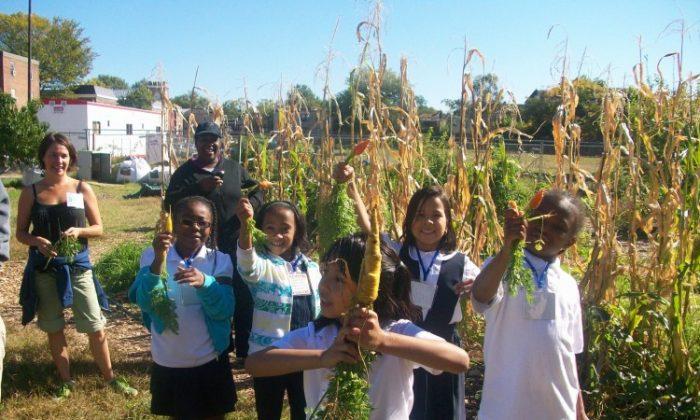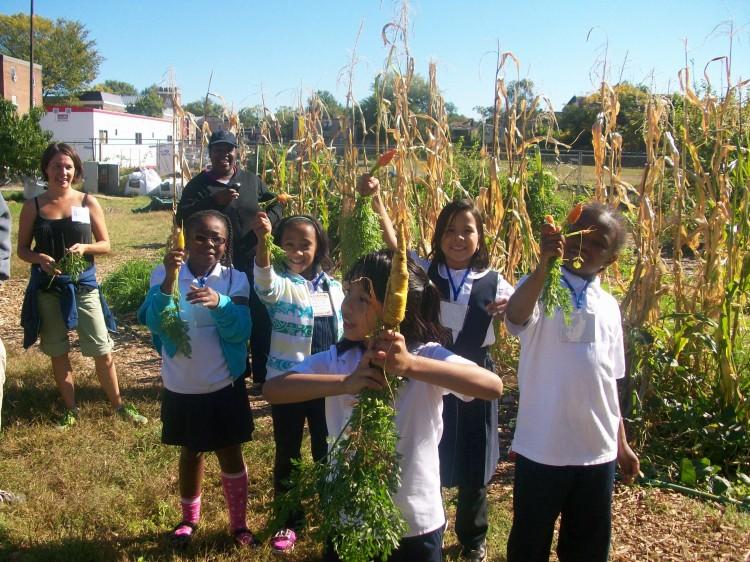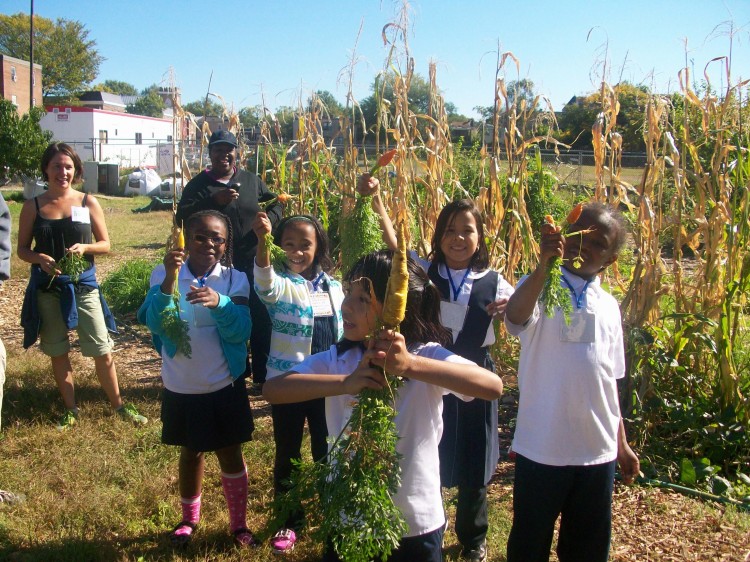Recognizing and understanding the differences between the tastes and textures of beet greens, mustard greens, kale, or other leafy vegetables, is something that even Washington, D.C.’s self-proclaimed foodies may not be able to do.
However, with the help of Andrea Northup and her team at the D.C. Farm to School Network, many D.C. public school students can now not only discern a variety of fresh green vegetables, but also explain their tastes and preferences.
“Seeing children connect the dots about food systems is very rewarding,” Northup told The Epoch Times.
As the founder and director of the D.C. Farm to School Network, Northup works closely with D.C. school administrators, principals, teachers, and school nutrition workers to ’shepherd' them through the process of getting farm fresh foods into school cafeterias. As part of the program, Northup and her network team also help students explore the tastes of fresh fruits and vegetables, and learn about the benefits of eating local in-season produce.
“We are up against big advertising agencies that are working to get kids to eat highly processed foods. Breaking away from the reality that those foods are exciting to kids is difficult. One way to do it is having them get used to tasting foods prepared by local chefs,” she said.
Engaging with kids to encourage them to learn more about the farm-to-table process and helping them to understand where fresh fruits and vegetables come from is only part of Ms Northup’s work. She has been recognized as Young Food Leader in the 2012 Growing Green Awards, by the Natural Resources Defense Council (NRDC), a nonprofit environmental action group.
Northup has had a hand in increasing the amount of funding D.C. public schools receive for each meal through her involvement in the passage of the Healthy Foods Act, a local piece of legislation that heightens D.C. public school meal nutritional requirements. The Act requires schools to report where fruits and vegetables served in school meals come from, and provides an extra 5 cents for each school breakfast or lunch that contains at least one fresh locally grown meal component.
“It is important to have fresh food and farms to go to. Fresh foods because, then you know right away that it is going to be good,” said a Cleveland Elementary School student in a video on the D.C. Farm to School website.
Northup, who previously worked in public school systems prior to moving to Washington, D.C., said she was familiar with the challenges public schools face. “Schools have $1 to spend on the entire meal, which includes an entree, two fruits and vegetables, and a drink,” she said.
Childhood Obesity
According to the Center for Disease Control and Prevention (CDC), childhood obesity has more than tripled in the United States in the past 30 years. As of 2008 figures, one in three children or adolescents were overweight or obese. The CDC cites the critical roles that schools play in the prevention of obesity by providing policies and practices that support healthy behaviors.
The D.C. Farm to School Network’s work ties into the missions of the National Farm to School Network and the Let’s Move campaign initiated by First Lady Michelle Obama to solve the challenge of childhood obesity within a generation. The Let’s Move campaign offers tips and step-by step strategies for families, schools, and communities to help kids be more active, eat better, and grow up healthy.
In 2010, the USDA Healthy, Hunger-Free Kids Act, supported by the first lady and signed by the president, marked the greatest change in meal patterns and nutritional standards for National School Lunch and School Breakfast programs in 15 years. The rule requires most schools to increase the availability of fruits, vegetables, whole grains, and fat-free and low-fat fluid milk in school meals; reduce the amount of sodium, saturated fat, and trans fat in meals; and to meet the nutritional needs of children.
The D.C. Farm to School Network is a program of the Arcadia Center for Sustainable Food & Agriculture, a nonprofit organization that is focused on improving the overall health of the community and the environment. The D.C. Farm to School Network is funded in part by a Healthy Eating Active Living grant from Kaiser Permanente.
The Epoch Times publishes in 35 countries and in 19 languages. Subscribe to our e-newsletter.





Friends Read Free